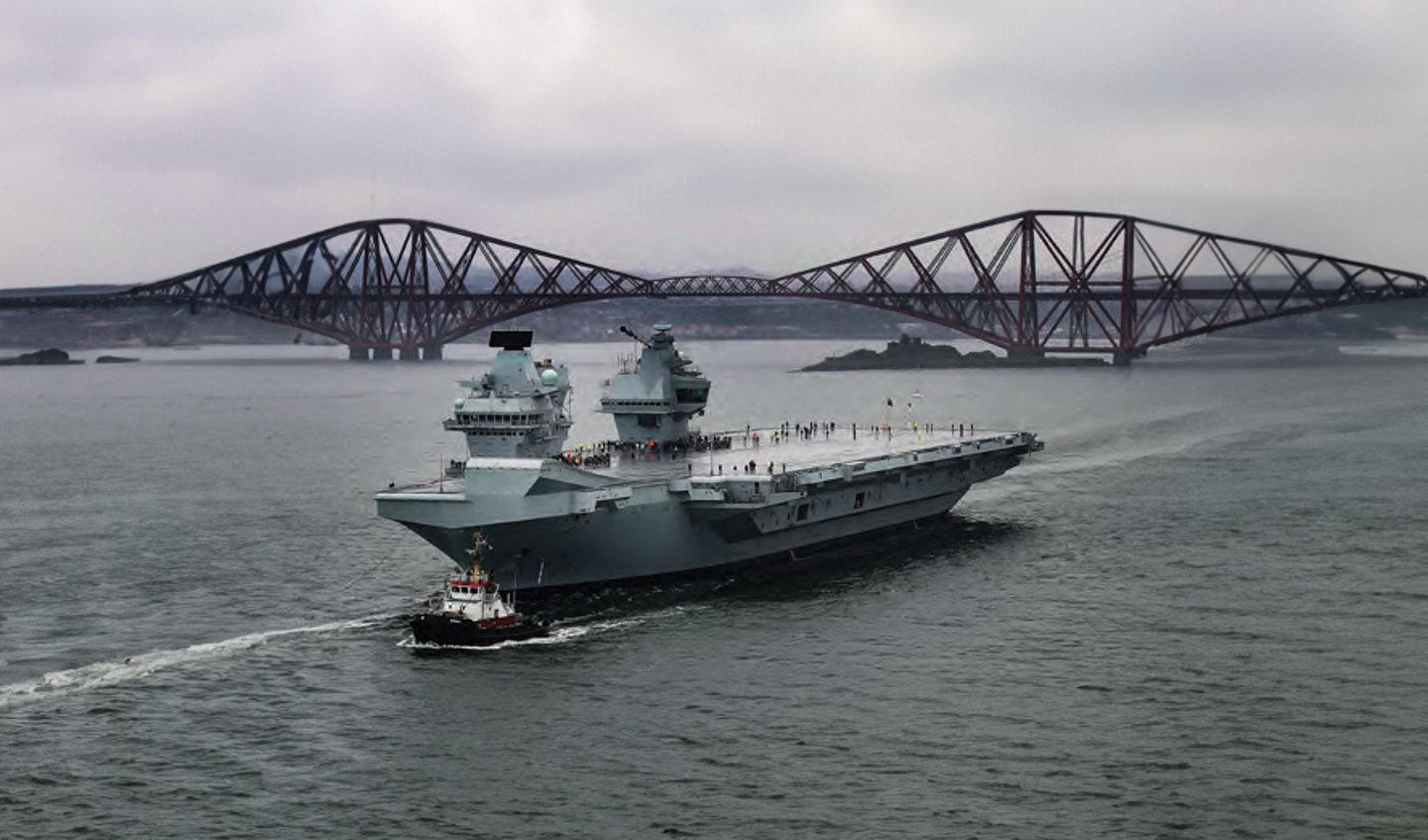Preparing the aircraft carrier, HMS Queen Elizabeth, and her Carrier Strike Group (CSG1) for its seven-month Far East deployment earlier this year was a major 24/7 commitment for LR’s naval experts, some of whom are permanently ‘embedded’ in Royal Navy support contractors in key locations including Bristol, Devonport and Portsmouth.
CSG1, as it is known, is the largest concentration of maritime and air power to leave the UK in a generation. The eight-vessel flotilla of ships, all classed by LR, left Portsmouth on May 22. It consisted of the aircraft carrier itself, designed to carry up to 40 aircraft; two Type 45 destroyers, HMS Defender and HMS Diamond; two Type 23 frigates, HMS Richmond and HMS Kent; an Astute-class submarine, HMS Artful; and two Royal Fleet Auxiliary support ships, RFA Fort Victoria and RFA Tidespring.
Between May and December, CSG1 will have visited locations including India, Japan, the Republic of Korea and Singapore. Joint operations with a number of different navies are taking place through the deployment.
Logistical challenge
Although LR had been active in Royal Navy-related business for more than 150 years, it was not until 1998 that the UK’s Ministry of Defence requested the classification society to draw up Naval Ship Rules, published two years later. Since then, LR has classed more than 400 naval vessels on behalf of 19 navies.
Preparing the CSG1 for its Portsmouth departure constituted a major logistical challenge for LRs survey teams across the UK. Keith Ivory is a specialist in the small naval boats team. “I am involved with the passenger transfer boats that run with aircraft carrier, and the fast sea boats that are available for the transport of marines and commandos,” he explained.
“So, my responsibility was to re-profile the survey schedules of all individual supporting craft, bearing in mind that they were going out for several months. It was a juggling act … getting them ready beforehand and then re-adjusting them when they return, getting them back into a cyclical pattern of routine inspections.”
This example was repeated for the other vessels readied in Portsmouth, Plymouth, Falmouth and Newcastle. For some of the larger vessels, LR is providing further support by sending specialists to key locations to support CSG1’s planned itinerary.
Knowledge transfer
Of course, one key question about the assurance of assets engaged in CSG1’s deployment is whether LR can apply some of the developments in remote inspections and shore-ship advice that have transformed routine surveys in the commercial sector. However, this is a complex challenge in a naval context because the transmission of real-time data or live-streaming video is not permitted.
But LR’s Paul James, Naval Centre of Expertise Manager in Bristol, believes this may change in time but explains why this does not really matter for the moment. “Our people are constantly in touch with the assets and those who operate them,” he said.
“They know the ships intimately because they may have been involved in their construction or they are regularly carrying out inspections. Our surveyors know where or what to look at, and because we have specialist teams and extensive knowledge, we can provide remote assistance over the phone. Video live stream is not necessary.”
However, in another and potentially more pressing aspect of ship operation, there may well be a very useful exchange on technology developments in the months ahead. The Royal Navy may well be looking for a commercial lead on sustainability issues.
“So, as you know,” said James, “the Royal Navy will face the same low-carbon challenge as commercial shipping. But it has some unique problems because a lot of low carbon options involve highly volatile fuels. It’s not good to combine these with a combat scenario. The aim is to bring the low-carbon benefit without making the ships less safe.”
Since the world’s navies have a unique operating profile, environmental stewardship is likely to take more time than in commercial shipping where pilot projects are already assessing the scope for new fuels, including methanol, ammonia, and hydrogen. But the increasing urgency of the climate emergency is changing the backdrop. LR’s expertise in environmental assurance may well be required in a naval context sooner than expected.
Eyes below water
One of the Royal Navy’s Astute-class submarines is accompanying the HMS Queen Elizabeth Carrier Strike Group. The five-year-old HMS Artful, the third Astute in the class of seven nuclear submarines, was built at BAE Systems Submarines’ shipyard at Barrow-in Furness.
LR has a permanent team of submarine specialists assigned to the assurance of products, components in the supply chain, and the construction process itself. It has recently published an updated submarine assurance framework and offers these services to navies around the world.
LR’s submarine offering is unique. Unlike others which set out specific build requirements, LR assures that the design and build standards of submarines are suitable and appropriately applied to materials, equipment in the supply chain, build and subsequent through-life operation of the asset in service.
LR was the first classification society to have Naval Ship Rules and is a leader in the submarine field. It prides itself on applying a more flexible and thoughtful approach to naval classification and asset assurance.







